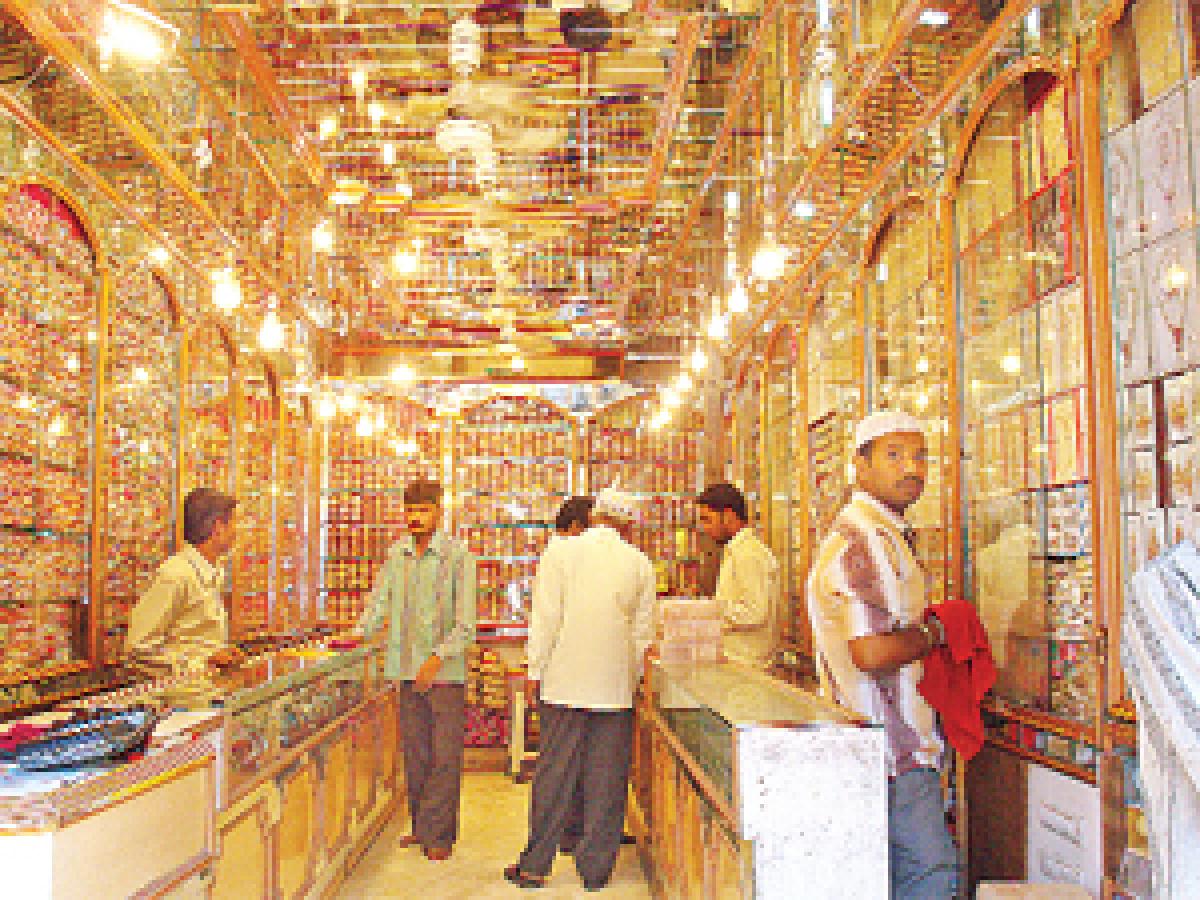Live
- ‘Get Set, Grow Summit 2024’ Focuses on Digital Detox for Families
- Stokes motivates his team to put in extra effort, says England pacer Potts
- From overcoming setbacks to leading India in U19 Women’s Asia Cup, Niki Prasad's amazing journey
- Driving Enterprise Security: Inside Venkata Reddy Thummala’s Leadership Journey
- Constitution debate: PM Modi hails 'Nari Shakti'; makes strong pitch for 'United Bharat’
- Abhijeet Bhardwaj: Revolutionizing Enterprise Analytics with Innovation and Expertise
- Bihar: Inquiry initiated against principal who went to buy veggies during school hours
- Press Sri Lankan Prez for release of Indian fishermen: TN Cong MP to EAM Jaishankar
- TN: DMK postpones executive meet due to heavy rains & Parliament session
- Porous silicon oxide electrodes can fix durability issues in batteries: Researchers
Just In

Ramzan Special: Story Behind The Glitter. From time immemorial, bangles have occupied an envious position as one of the most favoured of all decorative ornaments for womenfolk in the country.
.jpg) From time immemorial, bangles have occupied an envious position as one of the most favoured of all decorative ornaments for womenfolk in the country. For some, they are much more than mere objects of ornamentation as they have a deep religious significance and are conspicuous indicators of status.
From time immemorial, bangles have occupied an envious position as one of the most favoured of all decorative ornaments for womenfolk in the country. For some, they are much more than mere objects of ornamentation as they have a deep religious significance and are conspicuous indicators of status.
In Hyderabad’s Charminar area there is an entire street called Lad Bazaar, (translated as ‘bazaar of fondness’ or ‘the street of love’). There are quite a few shops in this street that are involved in the bangle trade. This is perhaps the most fabulous bangle bazaar in the country.
These shops in the Lad Bazaar are also well-known for the studded bangles, which have enjoyed the proud and privileged position of adorning the graceful wrists of many a beautiful, aristocratic lady in the country in the past. Even today they hold a special appeal to the fashion-conscious ones, young and old alike.
This craft, which has its origin in the dusty lanes of Charminar and Lad Bazaar, is not present anywhere else in the country. With all the workshops engaged in the production of these bangles, the city still holds a monopoly over them.
It would be no understatement to say that these bangles have an aura and charm, which makes them irresistible. The shopkeepers and the area narrate many tales of customers visiting their shops and being fascinated. This holds especially true of the tourists who visit the historic Charminar and do not leave without purchasing some of the glittering, pearl-studded bangles as souvenirs.
The craft, which has acquired the form of a small-scale industry now, was earlier the primary occupation of a few families in the villages. The finished products were taken to the temple for distribution to the neighbouring villages.
The origin of this craft goes back to the Qutub Shahi days. There are some who believe that the pioneers came to the city as hakims (the local visitors), who were experts in curing carbuncles. They came to the city at the invitation of Qutub Shah, who was suffering from carbuncles. Thus, practicing their medical profession was a primary occupation, and bangle making subsequently acquired the form of a subsidiary one.
However, there are some who beg to differ. The author of the ‘Bangle-Char-Chaman’, Mohd Hussain writes, "As the trade relations between Golconda and Persia were cordial, a group of Persians who were mainly hakims and subsidiary occupation was bangle-making, came to Golconda at the invitation of the king and settled down here. Therefore, bangle-making as an industry started in Hyderabad during the Qutub Shahi period."
There is yet another version, which says that the artisans might have come from Vijayanagara kingdom. Ghulam Yazdani, the first Director of the Department of Archaeology is of the opinion that there were regular trade ties between the Golconda and Vijayanagara kingdoms in the 15th and 16th centuries. During this period, Vijayanagara was the main centre for manufacturing glass bangles, which were brought to Golconda, the main market place of those days.
As such, a few families engaged in this occupation might have migrated from Vijayanagara to Golconda, and settled there permanently after the downfall of the Vijayanagara kingdom.
There are some other historians, who believe that this craft originated in Rajasthan during the 17th century. According to them, the Mughal empress Mumtaz Mahal was a great patron of beaded bangles and set the fashion trend among the nobility of the time.
According to local artisans, the craft of making studded bangles originated in Hyderabad about 150 years ago during the time of the sixth Nizam, Mir Mehabub Ali Khan. To lend credibility to their claims is the fact that it was in Lad Bazaar that the Chowmahalla – a royal palace was constructed to house the Nizam. Thus, it was but natural to call the street Lad Bazaar or street of love.
The trend, fifty years ago, was bangles studded with glass pieces, using lacquer (1ac) in chocolate or cream colour. Though there has been a sea of change in the crafting of bangles today, its initial problems lay in the fact that bangle crafting was a household enterprise. This meant some problems involving investment capabilities, procuring raw materials (stones), and the pre-set tastes of the clients who seemed to prefer only traditional designs.
During the festive seasons, particularly Ramzan, and even during marriage seasons, the sales are high. It seems to be a custom among Muslims for brides to wear studded bangles at the time of wedding. It is said that purchase of bangles from Lad Bazaar is a must in orthodox Hyderabadi Muslim marriages.
Jogi Naidu

© 2024 Hyderabad Media House Limited/The Hans India. All rights reserved. Powered by hocalwire.com







